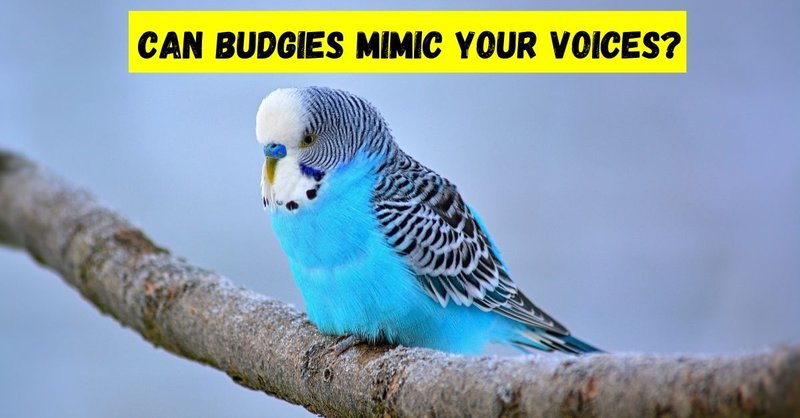
Now, you might be curious about how to get started with teaching your budgie to talk and the best tips to make it happen. Don’t worry! Teaching a budgie to mimic your words isn’t as daunting as it may seem. In fact, it’s a fun and rewarding process that can strengthen your bond with your little buddy. Let’s dive into exactly what you need to know about budgies and their talking abilities, along with some tips on training them.
Understanding Budgie Communication
Budgies, also known as parakeets, are social creatures. In the wild, they communicate with each other using various sounds, from chirps to whistles. Each sound serves a purpose, whether it’s to signal alarm, attract a mate, or just to socialize. Here’s the thing: when you bring a budgie into your home, you become part of its flock. This means that your budgie will likely want to communicate with you, too!
While not all budgies can become expert talkers, many have an impressive ability to mimic human speech. This skill doesn’t come naturally for every bird, but with patience and the right training strategy, even a shy budgie can learn a few words. Imagine having a chatty companion who can repeat your favorite phrases!
Training your budgie starts with understanding its natural behaviors. Budgies are curious and intelligent, so tapping into their instincts can really help with the training process. You might be wondering about the best time to start training. The earlier you begin, the better! Young budgies are often more receptive to learning, but an older budgie can also learn new things, just like any of us can.
Choosing the Right Environment for Training
Creating the right atmosphere for your budgie’s training session is crucial. Ideally, you want a quiet space where your feathered friend can focus without distractions. Think of it like trying to study for an exam; a noisy room isn’t going to help!
Here’s how to set up your training environment:
- Choose a quiet room: Pick a space that’s free from loud noises like TVs, music, or barking dogs.
- Limit distractions: Close windows or doors to muffle outside sounds. If you have other pets, keep them in another room during training.
- Time it right: Train when your budgie is most alert, usually in the early morning or late afternoon.
Once your environment is set, it’s time to bring out those treats! Rewards play a vital role in training. Budgies respond exceptionally well to positive reinforcement, which means treats or praise go a long way. Think of treats as a little incentive to encourage your budgie to engage and learn.
Starting the Training Process
Now that you’ve got a great environment, it’s time to jump into the training process itself. Start by choosing simple words or phrases to teach your budgie. Short and clear terms work best. Words like “hello” or “pretty bird” are great starting points. Remember, repetition is key!
Here’s a step-by-step approach to get started:
1. Choose a Phrase: Pick a word or simple phrase you’d like your budgie to learn.
2. Repeat and Reinforce: Clearly say the chosen word repeatedly. Try saying it every time you interact with your budgie.
3. Use Rewards: Give treats or praise whenever your budgie makes sounds that resemble the word, even if it’s just an attempt.
4. Be Patient: It might take time for your budgie to start mimicking sounds. Just like learning a new language, practice makes perfect!
Over time, your budgie may start to mimic the sounds it hears. Remember, every bird is unique; some may take longer to learn than others. Celebrate the small victories along the way!
Common Challenges and How to Overcome Them
Training your budgie isn’t always smooth sailing. There are a few challenges that you might face, but don’t let that discourage you! Here are some common issues and tips to overcome them:
– Lack of Interest: If your budgie doesn’t seem engaged, try switching up the phrases or using a different type of treat. Some have preferences!
– Noisy Environment: If your budgie gets distracted easily, you might need to revisit the training environment. A quiet space can make a huge difference.
– Impatience: It’s essential to be patient and consistent. If you feel frustrated, take a break and try again later. Birds can sense your mood, so a calm energy helps!
Don’t forget, building a connection with your budgie during this time is just as important as the training itself. Spend time playing and interacting with your bird outside of training sessions so it feels more comfortable with you.
Maintenance and Building on Skills
Once your budgie starts mimicking words, it’s important to keep that momentum going. Birds can forget what they’ve learned if they aren’t regularly engaged and stimulated. Just like maintaining a beautiful garden, you have to keep watering and caring for it to thrive.
Here are some tips on maintaining their new skills:
- Regular Practice: Keep practicing the words your budgie has learned to reinforce them.
- Introduce New Words: Once your budgie is comfortable with a few words, gradually introduce new phrases to expand its vocabulary.
- Use Variety: Change up your training sessions to keep things fresh and exciting!
Additionally, encouraging your budgie to social out loud can keep its skills sharp. Play music or leave the radio on, so it has a variety of sounds to react to. This ensures your bird stays engaged and continues to develop its talking ability.
In conclusion, training your budgie to talk can be a delightful journey filled with fun moments and challenges. It’s all about creating a positive environment, being patient, and engaging with your feathered friend regularly. Remember that while some budgies might take to talking like pros, others may only learn a few simple sounds. Regardless, the experience of bonding with your budgie is truly rewarding.
So, whether you’re dreaming of sharing daily conversations or simply enjoying your budgie’s cheerful chirps, know that with time and effort, you can teach your little buddy to mimic words. Embrace the process, and who knows? You might end up with a charming companion that can share a few phrases with you!

